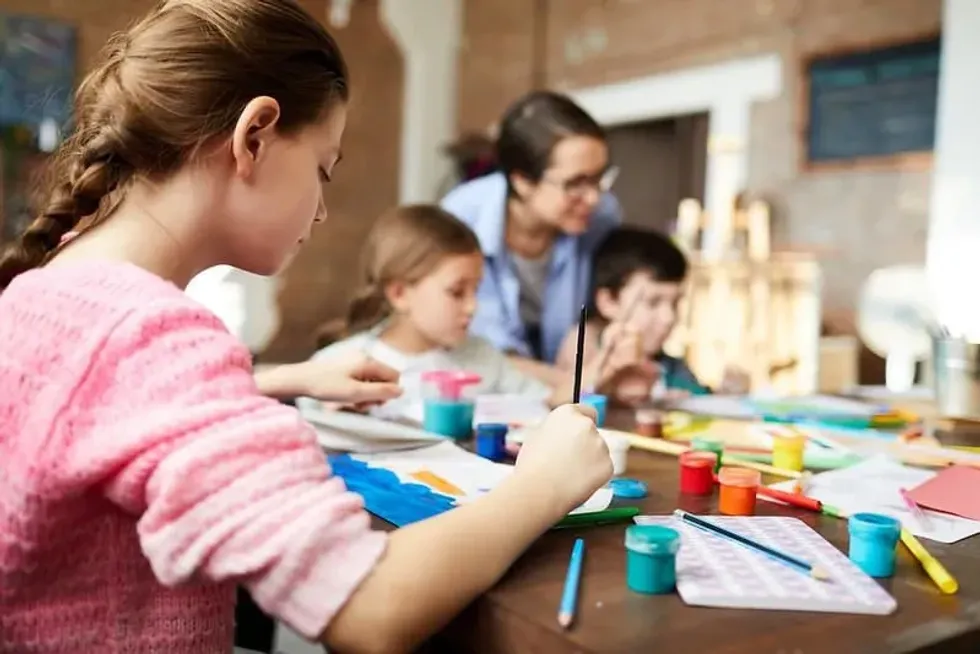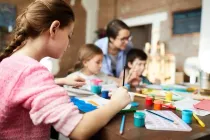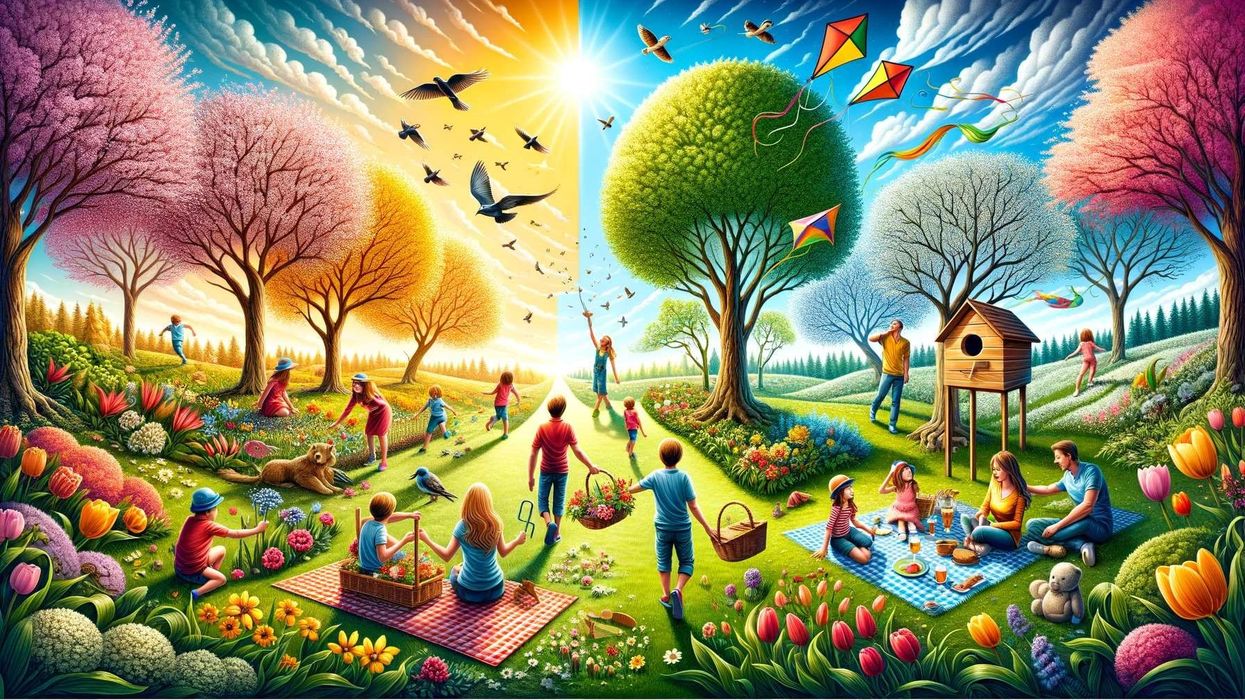Ultimate Guide To Learning To Paint For Kids And Teens

No matter what their interests are, kids seem to love nothing more than to get messy and creative with paint and color.
Like any skill, there are lots of ways to take this interest further and develop your child's drawing and painting abilities so they feel comfortable exploring their creative side, and maybe even develop a passion for art!
This compilation of lessons, exercises, and tips will keep kids occupied for hours, and have them creating anything from finger paintings to self-portraits.
Each of these lessons contains examples of how you can adapt the techniques used to suit any age and lots of tips and tricks to get the most out of each activity. So, grab your paintbrushes, and let's get creative!
Understanding Colors When Learning To Paint
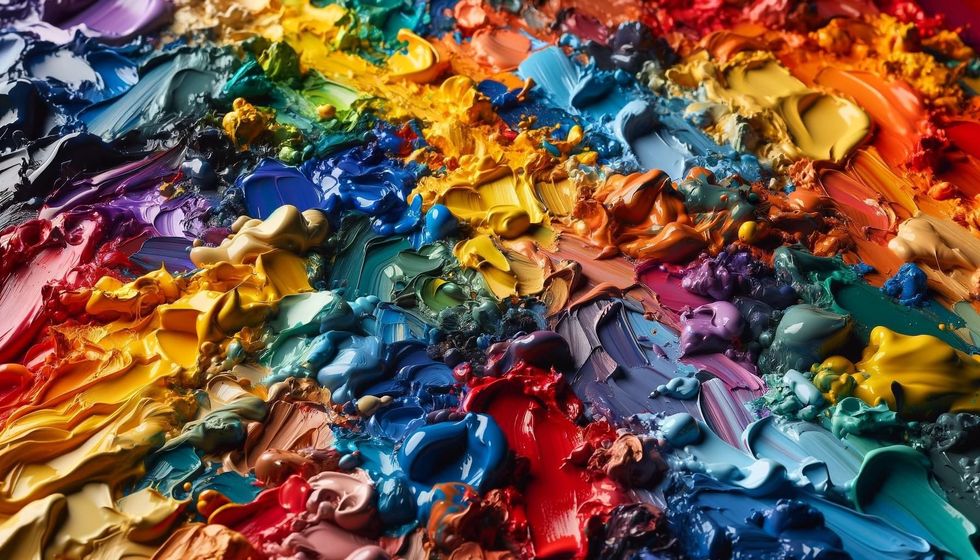
Understanding the relationships between different colors is an important building block when learning how to paint.
Under 5s: Cut shapes out of cellophane sheets in primary colors (red, yellow, and blue). Then, let your child play with the shapes and see for themselves the way each color interacts to make something new.
Ages 5-8: Introduce the idea of secondary colors by giving kids primary colored paints, and asking them to mix them up in different ways and paint a picture!
Ages 8+: Inspired by the French artist Georges Seurat who famously painted only using small dots of paint, ask your child to make a picture using only dots of color, in the 'Pointillist' style! This way, they can see how small sections of color can make up something completely different when seen from a distance.
No-Eraser Drawing Activity
Most children are used to drawing using mainly pencils, so if they make a mistake it can be easily corrected. The following exercise takes away the eraser, so kids can learn to take their time while drawing, and also improve their confidence in their work.
Under 5s: As this might be their first introduction to pens, be ready for a little mess! Give your child a marker pen and paper, and let them draw or scribble whatever they like. Show them that this time what they've made can't be erased, and is theirs to keep!
Ages 5+: Since you can't erase while painting, try not erasing while drawing! Simply let children have fun making whatever drawing they like on paper. But, there's a catch! Challenge them to not use an eraser at all while they draw, this will help them make smart decisions while drawing, and gain confidence in their ability to create art.
Learning To Paint With Watercolor
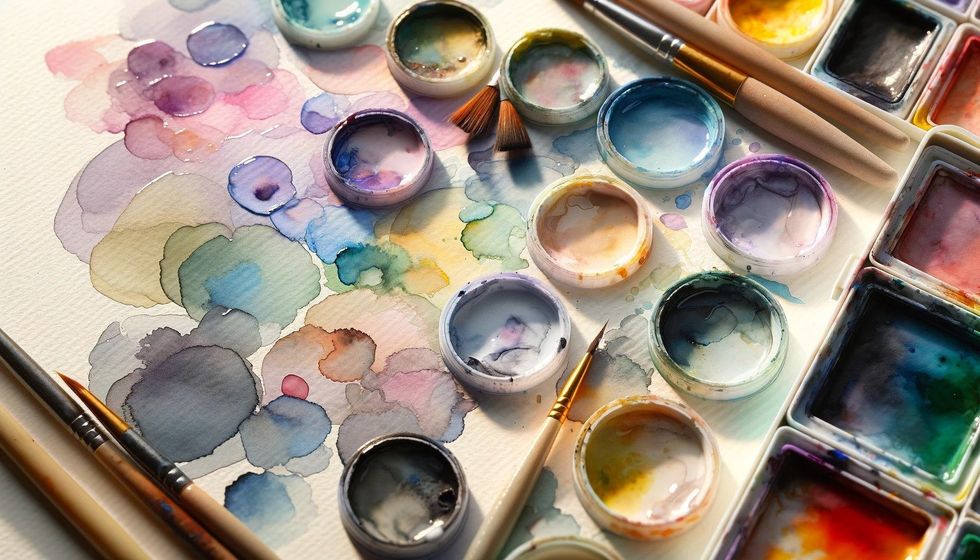
One of the simplest (and most washable!) painting techniques, watercolor has been around for centuries. It's also a great way for children to begin painting, as it's quick, easy, and can be used in addition to drawing and other types of paint.
Under 5s: If your toddler loves using a pencil, try taking it one step further and introduce them to holding a brush. PlayfulLearning.com has some great, easy ideas on 'Introducing Watercolor To Children', which are loads of fun and will help kids become more familiar with painting on paper.
Ages 5-8: It can be a challenge to work with watercolors at first, so check out the simple lessons on nurturestore.co.uk which are perfect for introducing kids to all the different ways they can create beautiful watercolor art.
Ages 8+: One of the best things about watercolor is the fact you can draw on top of it once it's dry! Why not grab some pens and make some super easy watercolor feather paintings by adding the detail in black liner onto your patches of watercolor?
Requiring minimum expertise for a beautiful result, this concept is also easy to apply to other ideas, so there really is no limit to what kids can create!
Painting With Acrylic
Considered to be one of the most versatile types of paint, acrylic is perfect for helping kids learn how to paint. Not only can it be thinned down easily, but it can also be used to make bright, textured paintings (plus it dries really quickly!).
Under 5s: When it comes to acrylic painting, you can make some dazzling abstract art. Simply set some paints out (you can lightly water them down for use with younger children), and allow kids to familiarise themselves with the new textures, colors, and how they all interact.
Ages 5+: If your child loves to paint, now could be a perfect time to introduce them to working on canvas. Small, pre-stretched canvases are inexpensive and make your painting into an instant, ready-to-hang work of art.
Felt Magnet offers a step-by-step guide to using acrylics for beginners of all ages, containing lots of tips on how to take your painting skills to the next level.
Painting To Music

This uber-fun painting activity is lots of fun for kids of all ages, and it really helps them to learn a little bit more about their own artistic style.
All you need to do is select some tunes from different genres (think classical, rock, pop, or reggae) and allow the kids to respond through art! Set them up with some paint, paper, and water, and allow them to really focus on what they want to create.
Check out the fantastic resources on artfulparent.com for more ideas on painting to music with kids.
Simple Still Life Drawing And Painting
Observational drawing and painting are fantastic ways for kids to develop their skills, and become more familiar with the world around them.
Under 5s: Start kids off with still life by getting them to think about shapes. Colorful blocks and other simple items are perfect ideas to use as a painting prompt.
Ages 5-8: For an ultra helpful exercise in 'seeing', The Artful Parent also provides a guide to observational drawing which encourages kids to look at things from an artistic point of view and express this through painting and drawing.
Ages 8+: If your kids have an interest in starting to learn how to create a still life with accuracy, the Still Life Techniques from artyfactory.com are sure to help with their observational drawing and painting abilities.
Top Tip: Painting a still life can be intimidating, but it's important to remember that not everything needs to be realistic. Even the best artists make mistakes, and everyone has their own unique style that is important to them.
If your child is feeling frustrated about their outcome, remind them that there's no such thing as a bad artist and that by practicing, they are making amazing progress.
Painting Easy Portraits
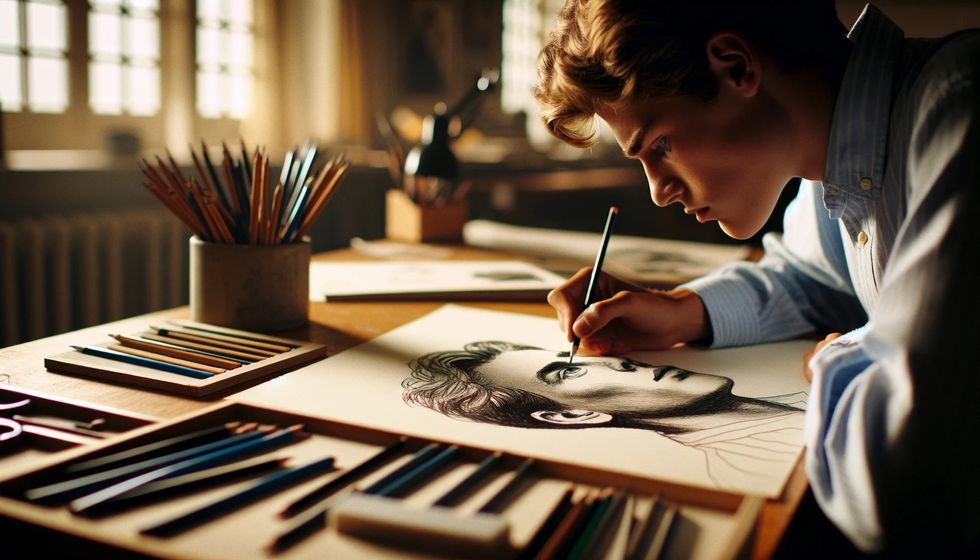
Painting from life is one of the most challenging and rewarding skills an artist can learn. By trying out these easy activities, kids can begin to develop their ability to work from life and start to think about what they would personally like to create.
Under 5s: With younger children, creating a portrait is all about color, expression, and imagination. Ask kids to create a picture of a family member, pet, or imaginary figure, and let them loose with some paint and paper!
Ages 5-8: All you need for this easy self-portrait activity is a mirror and some painting supplies! Hello, Wonderful offers twelve self-portrait ideas which are a great start for helping kids learn all about creating a piece of art that represents themselves.
Ages 8+: If your child is enthusiastic about painting, now is a great opportunity to introduce them to oil paints. Traditionally used by the masters, oil painting requires patience and preparation but is an invaluable skill for kids to learn early on.
Several resources lay out the basics of oil painting for kids, so your child can learn everything they need to make stunning works of art.
FAQs

How can I introduce my child to the art form of painting?
Introducing your child to the art form of painting can start with simple and fun activities tailored to their age group. For toddlers, playing with shapes cut from cellophane sheets in primary colors can be a great beginning.
As they grow, experimenting with primary colors to create secondary ones, or trying out different techniques such as watercolor or acrylic paint, can further their painting journey. Remember, the key is to adapt the activity to their developmental stage, making it a fun learning process.
What materials do we need to learn to paint with acrylics?
To start painting with acrylics, you'll need a basic set of acrylic paints, brushes of various sizes, a palette for color mixing, and a surface to paint on, such as canvas or paper. Acrylic paint is versatile and dries quickly, making it ideal for young artists.
Starting with a limited palette can help them learn the basics of color mixing and brush strokes without feeling overwhelmed. Over time, you can introduce more colors and different types of brushes as their skills develop.
How can children learn to paint through YouTube?
YouTube is an excellent resource for children to learn painting techniques at their own pace. By searching for beginner painting tutorials, they can find step-by-step guides on creating art with various mediums, including acrylic paint and watercolors.
These videos often demonstrate foundational skills such as brush strokes, color mixing, and working with a primary palette. Watching artists work can inspire children and boost their self-confidence as they see their abilities grow.
What are some ways to boost a child's self-confidence in their painting abilities?
Boosting a child's self-confidence in painting can involve encouraging them to experiment with different techniques and mediums, praising their efforts rather than focusing on the outcome, and introducing no-eraser drawing activities to teach them that mistakes are part of the learning process.
Encourage them to view other artists' work for inspiration, but also remind them that every artist has a unique style and that they are on their own unique painting journey.
How can my child start painting if they are interested in learning from other artists?
If your child is interested in learning from other artists, begin by exposing them to a wide range of art forms and styles. Visiting art galleries, watching tutorials on YouTube, and reading books about artists can be incredibly inspiring.
Encourage them to practice regularly, starting with simple projects using a limited palette and basic brush strokes. This way, they can gradually build their skills, understand color mixing, and develop their unique approach to creating art.
What's the best age for kids to learn to paint, and how can we support their first painting experiences?
Children can start painting at any age, with the approach differing based on their developmental stage.
For very young children under 5, activities like finger painting or using large brushes with watercolor can be a gentle introduction. As they grow, introducing structured lessons that focus on basic color theory, using acrylic paint, and simple projects can enrich their experience.
Supporting their first painting experiences involves providing them with the materials they need, guiding them through the basics of brush strokes and color mixing, and encouraging their efforts to foster a love for the art form.
Are there specific exercises to help children understand color mixing better?
Yes, specific exercises can greatly help children understand color mixing. For young children, playing with primary-colored cellophane sheets can visually demonstrate how new colors are created.
Older children can benefit from hands-on experience with paints, mixing primary colors to create secondary ones. This practical application reinforces their understanding and encourages exploration, laying a foundational skill crucial for their painting journey.
Empowering kids and teens to learn to paint fosters imagination and confidence, and this guide has provided you with the key steps to kickstart their artistic journey. Keep practicing, experimenting, and exploring the wonderful world of painting, where each brushstroke leads to new discoveries and expressions.
We Want Your Photos!
More for You
Diploma of Education, Fine Arts, Bachelor of Arts specializing in Illustration and Visual media

Sarah HallamDiploma of Education, Fine Arts, Bachelor of Arts specializing in Illustration and Visual media
With a Diploma in Education specializing in Fine Arts (Painting) and a Bachelor of Arts specializing in Illustration and Visual media from the University of Arts London, Sarah previously was a London-based teacher who brought her passion for art and culture to the classroom. Her creative endeavors include painting classes and experimenting with new recipes. She draws inspiration from the world around her and enjoys sharing her knowledge with others while sipping a cup of tea.
Bachelor of Science specializing in Human Anatomy

Joan AgieBachelor of Science specializing in Human Anatomy
With 3+ years of research and content writing experience across several niches, especially on education, technology, and business topics. Joan holds a Bachelor’s degree in Human Anatomy from the Federal University of Technology, Akure, Nigeria, and has worked as a researcher and writer for organizations across Nigeria, the US, the UK, and Germany. Joan enjoys meditation, watching movies, and learning new languages in her free time.
Disclaimer
1) Kidadl is independent and to make our service free to you the reader we are supported by advertising. We hope you love our recommendations for products and services! What we suggest is selected independently by the Kidadl team. If you purchase using the Buy Now button we may earn a small commission. This does not influence our choices. Prices are correct and items are available at the time the article was published but we cannot guarantee that on the time of reading. Please note that Kidadl is a participant in the Amazon Services LLC Associates Program, an affiliate advertising program designed to provide a means for sites to earn advertising fees by advertising and linking to Amazon. We also link to other websites, but are not responsible for their content.
2) At Kidadl, we strive to recommend the very best activities and events. We will always aim to give you accurate information at the date of publication - however, information does change, so it’s important you do your own research, double-check and make the decision that is right for your family. We recognise that not all activities and ideas are appropriate for all children and families or in all circumstances. Our recommended activities are based on age but these are a guide. We recommend that these ideas are used as inspiration, that ideas are undertaken with appropriate adult supervision, and that each adult uses their own discretion and knowledge of their children to consider the safety and suitability. Kidadl cannot accept liability for the execution of these ideas, and parental supervision is advised at all times, as safety is paramount. Anyone using the information provided by Kidadl does so at their own risk and we can not accept liability if things go wrong.
3) Because we are an educational resource, we have quotes and facts about a range of historical and modern figures. We do not endorse the actions of or rhetoric of all the people included in these collections, but we think they are important for growing minds to learn about under the guidance of parents or guardians.

